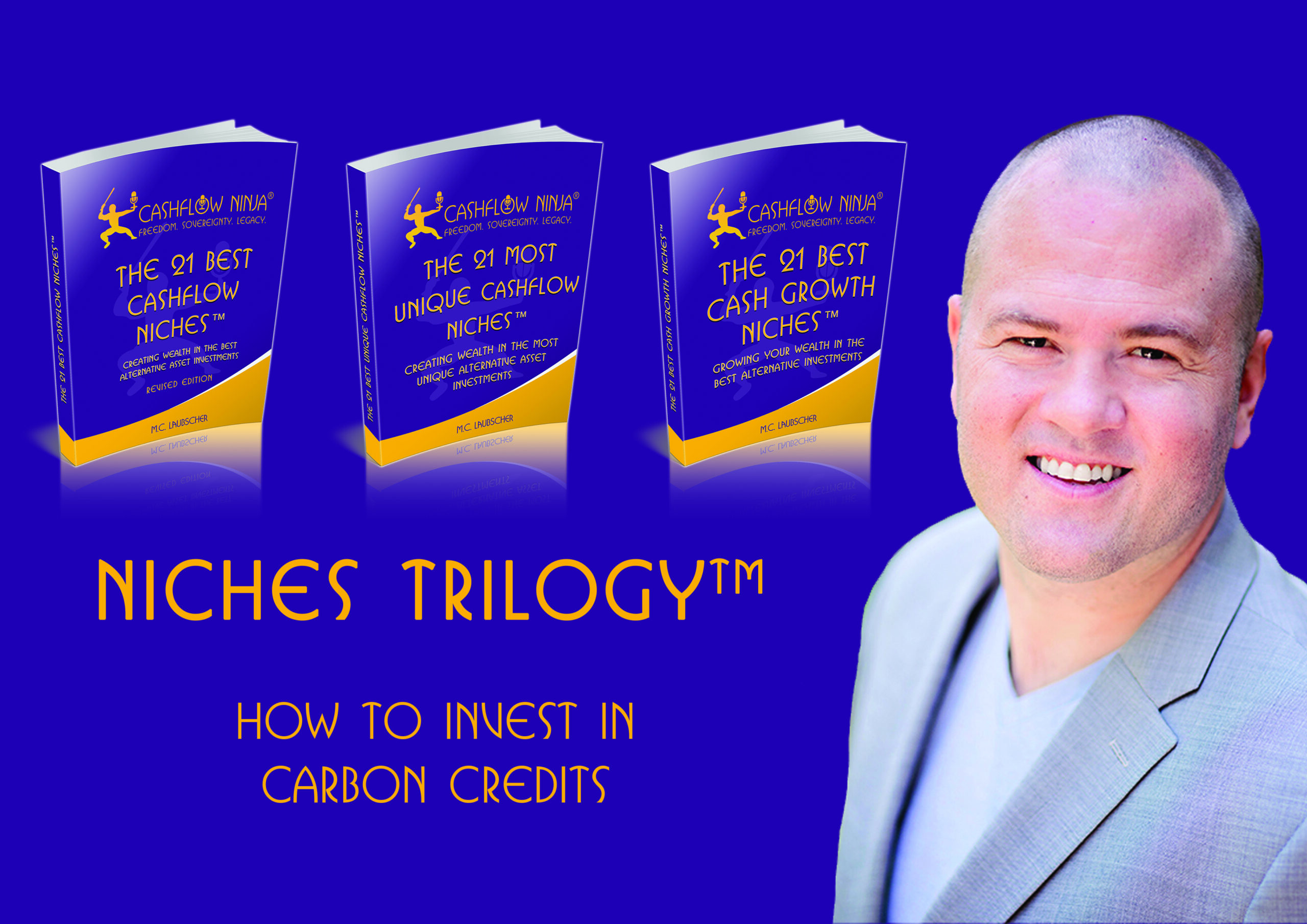
Carbon credits are a key component of carbon offsetting, which aims to mitigate greenhouse gas emissions by incentivizing activities that reduce or sequester atmospheric carbon dioxide. Essentially, a carbon credit represents the removal or reduction of one metric ton of carbon dioxide (CO2) or its equivalent in other greenhouse gases, such as methane or nitrous oxide.
Here’s how carbon credits work:
- Emission Reduction Projects: Carbon credits are typically generated through emission reduction projects that either avoid the release of greenhouse gases or remove them from the atmosphere. These projects can take various forms, such as renewable energy generation, reforestation, afforestation, energy efficiency improvements, and methane capture from landfills or agricultural activities.
- Certification and Verification: To be eligible for carbon credits, emission reduction projects must undergo certification and verification by accredited third-party organizations. These organizations assess the project’s adherence to specific standards and methodologies, ensuring that the claimed emission reductions are credible, additional, permanent, and verifiable.
- Issuance of Credits: Once a project is certified and verified, carbon credits are issued based on the amount of greenhouse gases reduced or removed. Each carbon credit represents one metric ton of CO2 equivalent, as determined by standardized calculation methodologies.
- Trading and Market Mechanisms: Carbon credits can be bought, sold, and traded on carbon markets, providing a financial incentive for emission reduction activities. Carbon markets operate under different schemes, such as compliance markets, where regulated entities purchase credits to meet emissions reduction targets, and voluntary markets, where businesses and individuals voluntarily offset their emissions.
- Retirement or Surrender: When a carbon credit is purchased, it is retired or surrendered to offset the buyer’s carbon footprint. Retirement ensures that the emission reduction represented by the credit is not double-counted and that the buyer can legitimately claim carbon neutrality or reduced emissions.
Carbon credits are crucial in incentivizing emission reduction activities and mobilizing finance for climate action. By monetizing the environmental benefits of emission reductions, carbon markets help drive investments in sustainable development and contribute to global efforts to combat climate change.
Why invest In Carbon Credits?
Investors may invest in carbon credits for various reasons, each with distinct motivations and potential benefits. First and foremost, investing in carbon credits allows investors to make a tangible contribution to environmental preservation.
In regions with carbon pricing mechanisms or emissions trading schemes, regulated entities like power plants, industrial facilities, and airlines must offset a portion of their emissions by procuring carbon credits. Recognizing the demand from these compliance-driven buyers, investors may invest in carbon credits to capitalize on this demand and benefit from the resultant price appreciation in carbon markets.
Carbon credits can present attractive financial prospects for investors, particularly in voluntary carbon markets where prices are determined by supply and demand dynamics rather than regulatory mandates. As the global shift toward a low-carbon economy gains momentum and the need for carbon offsets escalates, investors stand to gain from supporting projects that yield high-quality, verified carbon credits.
Beyond financial considerations, investing in carbon credits can serve as a strategy for diversifying investment portfolios,
As governments enact more stringent climate policies and businesses adopt carbon-neutral strategies, the demand for carbon credits is projected to soar, offering investors a chance to capitalize on evolving market dynamics and contribute to a rapidly developing sector.
Investing in carbon credits provides potential financial returns and diversifies investment portfolios.
Carbon Credit Ecosystem
The carbon credit ecosystem is a complex network of stakeholders, regulations, markets, and projects aimed at reducing greenhouse gas emissions and combating climate change. At its core are several key components. First, the regulatory framework comprises international agreements, national policies, and regional regulations, such as the Kyoto Protocol and the Paris Agreement. These set emissions reduction targets and establish mechanisms for carbon credit trading among countries. Carbon markets facilitate the buying and selling of carbon credits, with compliance markets for regulatory adherence and voluntary markets for corporate social responsibility. Carbon offset projects, including renewable energy initiatives, reforestation efforts, and industrial upgrades, generate carbon credits through emission reduction activities. Project developers manage these initiatives, securing financing and overseeing operations to ensure credit quality. Verification and certification processes, conducted by independent auditors, validate credits for legitimacy and compliance with standards like the Clean Development Mechanism or the Verified Carbon Standard. Buyers of carbon credits, ranging from companies to individuals, seek to offset their emissions or meet regulatory requirements. Aggregators and trading platforms facilitate transactions, providing liquidity and efficiency to the market. Carbon pricing mechanisms, such as taxes or cap-and-trade systems, establish the value of emissions reductions. Overall, the carbon credit ecosystem is crucial in addressing climate change by incentivizing emission reductions and fostering sustainable development through private sector investment in low-carbon technologies and practices.
How To Generate Income
Investors have several avenues to generate income within the carbon market.
Firstly, through carbon offset sales, investors can earn revenue by selling carbon credits representing reductions in greenhouse gas emissions. Entities purchase these credits to offset emissions and comply with regulations or sustainability goals.
Secondly, investors can engage in Carbon Trading in regions with emissions trading systems. They capitalize on pricing fluctuations by buying and selling carbon allowances or credits within regulated markets.
Another option is to invest in Carbon Offset Projects. These projects, like renewable energy or reforestation initiatives, generate carbon credits. Investors can earn income by supporting such projects and sharing the revenue from credit sales.
Carbon Credit Aggregation and Trading Platforms provide a streamlined approach. Investors use these platforms to transact with buyers and sellers, manage portfolios, and mitigate risks, potentially earning income through fees or revenue-sharing arrangements.
Carbon Credit Investment Funds pool capital from multiple investors to finance projects and acquire carbon credits. Investors can earn income from these funds’ investments through dividends, distributions, or capital appreciation.
Income generation in carbon credits depends on market demand, pricing, project performance, and regulatory factors. By participating in direct sales, trading, project investments, or utilizing platforms and funds, investors navigate various channels within the carbon market to maximize their income potential.
How To Lose Money
Investors in carbon credits face several avenues for potential financial losses. Market volatility, influenced by regulatory changes, economic conditions, and shifts in sentiment, can lead to significant fluctuations in demand, supply, and pricing. Project risks inherent in carbon offset projects, such as delays, cost overruns, or failure to meet emission reduction targets, can diminish the value of carbon credits. Regulatory uncertainty poses additional challenges, as changes in carbon pricing mechanisms or environmental regulations may impact credit value and tradability. Invalidated credits due to inaccuracies or non-compliance and insufficient demand in voluntary markets can also result in losses. Project failures, counterparty risks, and legal disputes further contribute to the complexity of carbon credit investing. To mitigate these risks, investors must conduct thorough due diligence, diversify investments, and stay informed about market developments and regulatory changes.
Positives & Negatives Of Carbon Credits
Positives:
- Environmental Impact: Investing in carbon credits allows investors to support projects that contributing to environmental sustainability.
- Financial Returns: Carbon credits can offer attractive financial returns, particularly in voluntary markets where prices are influenced by supply and demand dynamics. As the demand for carbon offsets increases, investors may profit from investing in projects that generate high-quality, verified credits.
- Diversification: Including carbon credits in an investment portfolio can serve as a diversification strategy, helping investors spread risk across different asset classes and sectors.
- Compliance Opportunities: In regions with emissions trading systems or carbon pricing mechanisms, investors can capitalize on compliance-driven demand from regulated entities required to offset their emissions.
- Social Responsibility: Investing in carbon credits allows investors to demonstrate their commitment to sustainability and corporate social responsibility.
Negatives:
- Market Volatility: The carbon market can experience significant fluctuations in demand, supply, and pricing, exposing investors to market volatility and potential financial losses.
- Regulatory Risks: Changes in carbon pricing mechanisms, emissions trading schemes, or environmental regulations can impact the value and tradability of carbon credits, posing regulatory risks for investors.
- Project Risks: Investments in carbon offset projects carry inherent risks related to project development, performance, and verification, such as delays, cost overruns, or failure to meet emission reduction targets.
- Lack of Transparency: The carbon market may lack transparency, making it challenging for investors to assess the quality and integrity of carbon credits and verify their environmental impact.
- Counterparty Risks: Engaging with unreliable counterparties or trading platforms exposes investors to counterparty risks, including defaults, insolvencies, or fraudulent activities.
Investment Opportunity Filter™
The Investment Opportunity Filter™ evaluates an investment opportunity based on cashflow, tax benefits, appreciation, and the leverage it provides.
Carbon credits score a 3/4 with The Investment Opportunity Filter™.
Carbon credits provides great cashflow, has great tax benefits, and you can also leverage the skill sets, capabilities, networks, and capital of others.
Subscribe To Our Weekly Newsletter:
The Wealth Dojo: https://subscribe.wealthdojo.ai/
Download all the Niches Trilogy Books:
The 21 Best Cashflow Niches
Digital: https://www.
Audio: https://podcasters.spotify.
The 21 Most Unique Cashflow Niches
Digital: https://www.
Audio: https://podcasters.spotify.
The 21 Best Cash Growth Niches
Digital: https://www.
Audio: https://podcasters.spotify.
Listen To Cashflow Ninja Podcasts:
Cashflow Ninja
https://podcasters.spotify.
Cashflow Investing Secrets
https://podcasters.spotify.
Cashflow Ninja Banking
https://podcasters.spotify.
Share This
Related

897: Eugene Shatsman: How To Grow & Scale Your Business Right Now
My guest in this episode is Eugene Shatsman. Eugene is the Managing Partner of National Strategic Group. Eugene teaches business strategy, consumer behavior, marketing, and what all of us want – how to drive more business into our businesses. His team at National Strategic has over 100 people, and they do a tremendous amount of…

896: Chris MacIntosh: Opportunities Around The Globe Right Now
My guest in this episode is Chris Macintosh. Chris has founded and built several multi-million dollar businesses in the investment arena, including overseeing the deployment of over $30m into Venture Capital opportunities and advising family offices internationally. Before this, Chris built a career at Invesco Asset Management, Lehman Brothers, JPMChase, & Robert Flemings. Interview Links:…

895: Josh McCallen: Why Airbnb Gurus Are Shifting To Boutique Hotels
My guest in this episode is Josh McCallen. Josh is a nationally recognized hospitality executive, conference speaker, innovator, builder & investor with a track record for developing exceptional resort properties and growing world-class operational teams. Josh is also one of the principals of Accountable Equity, an investment firm that specializes in historic resort communities and…
